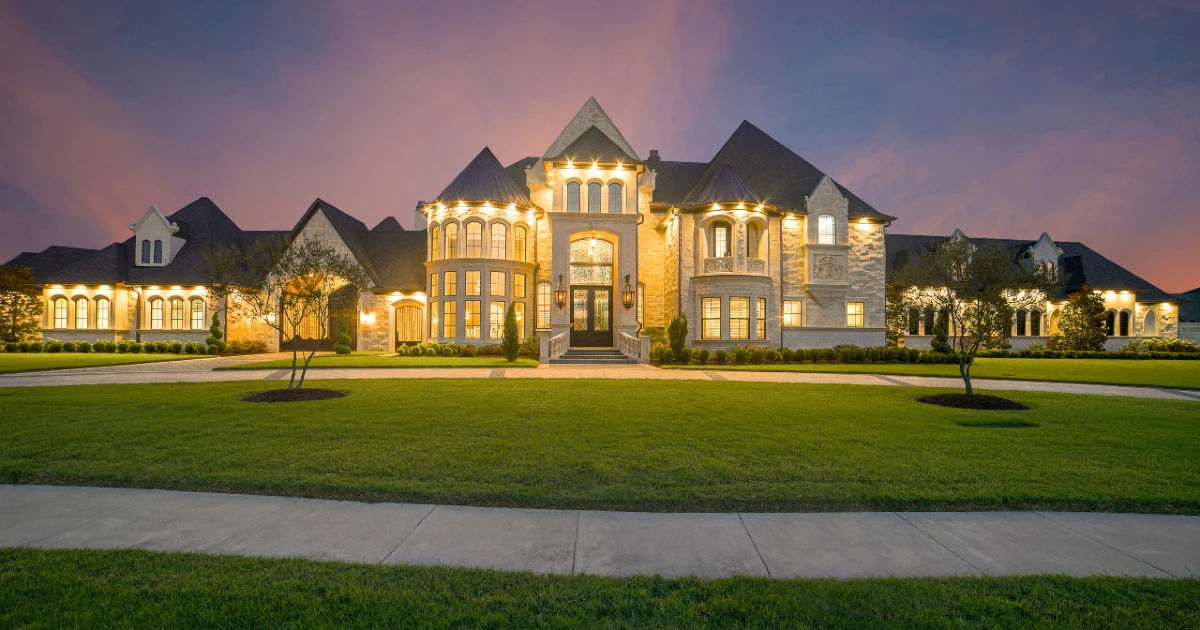Deciding whether to include utilities in rent is a significant consideration for landlords. It's a decision that can have both benefits and drawbacks. In this article, we will explore the advantages and disadvantages of including utilities in rent, helping you make an informed choice for your rental property.
Key takeaways
- Including utilities in rent can maximize rental income by allowing landlords to ask for higher rental prices.
- It can also help landlords differentiate their property from competitors and benefit from tax deductions on utility expenses.
- Including utilities in rent eliminates the need to retrofit separate meters in older apartment buildings or properties with shared meters.
- However, including utilities in rent can make landlords liable for the tenant's utility bills and potentially reduce profits due to fluctuating costs.
- Tenants may consume more utilities when they are included in the rent, leading to increased costs and negative environmental impacts.
Why including utilities in rent can benefit landlords
When it comes to managing rental properties, landlords often face the decision of whether to include utilities in the rent or not. While there are pros and cons to consider, opting to include utilities can offer several advantages for landlords looking to maximize their rental income.
Higher rental income:
One of the main advantages of including utilities in rent is the ability to ask for higher rental prices. By bundling utility costs with the monthly rent, landlords can justify charging a premium, ultimately boosting their rental income.
Utility ceiling:
Setting a utility ceiling is another benefit of including utilities in rent. With a predetermined cap on utility expenses, landlords can avoid unexpected costs that may arise due to excessive usage by tenants.
Differentiate your property:
Including utilities in the rent can also help differentiate your property from competitors. In a competitive rental market, offering the convenience of included utilities can attract potential tenants who are looking for a hassle-free experience.
Tax deductions:
Landlords who include utilities in rent may also be eligible for tax deductions on their utility expenses. This can result in significant savings during tax season, further enhancing the financial benefits of including utilities.
Overall, including utilities in rent can be a strategic move for landlords to increase rental income, set cost boundaries, differentiate their property, and take advantage of potential tax deductions. However, it is important for landlords to carefully evaluate their specific situation and consider the potential drawbacks before making a final decision.
You won't have to retrofit separate meters
For older apartment buildings or properties with shared utility meters, including utilities in the rent can be a convenient option. This eliminates the need to retrofit separate meters and simplifies the utility management process for landlords.
Why you should not include utilities in rent
While including utilities in rent can have its benefits, there are important reasons to consider why you may want to avoid this practice. By including utilities in rent, landlords take on the liability for the tenant's utility bills. This means that if a tenant fails to pay their utility expenses, the landlord is left responsible for resolving the issue, potentially leading to financial strain and disputes.
Another disadvantage of including utilities is the potential loss of profits. Utility costs can fluctuate, and when they are included in the rent, landlords may not be able to pass on these cost increases immediately through rent increases. This can result in reduced profits for landlords, especially in times of increased utility expenses.
Moreover, including utilities in rent adds extra responsibilities for landlords. Managing utility bills, ensuring timely payments, and handling any issues that arise require additional time and effort. These added responsibilities can be burdensome, particularly for landlords with multiple properties or busy schedules.
Additionally, including utilities in rent can attract lower-quality tenants. When utilities are included, some tenants may take advantage of the "all-you-can-eat" mentality, consuming excessive amounts of energy or water without consequences. This not only increases utility costs but may also result in property damage. Landlords risk attracting tenants who do not prioritize conservation or responsible usage of utilities.
To summarize, while including utilities in rent has its advantages, it is crucial to weigh the potential disadvantages. The liability for the tenant's utility bill, potential loss of profits, extra responsibilities, and the risk of attracting lower-quality tenants are essential factors to consider in the decision-making process. Landlords should carefully evaluate their individual circumstances and seek advice to make an informed choice regarding including utilities in rent.
The "all-you-can-eat" mindset
When utilities are included in the rent, tenants may develop an "all-you-can-eat" mindset, where they are more inclined to consume more due to the lack of consequences for high usage. This can have several negative consequences, including increased utility consumption and a significant environmental impact.
Tenants who do not directly pay for their utility usage may feel less responsible for their actions and may not be mindful of conserving energy or water. This can lead to excessive usage, wastage, and an overall higher utility consumption rate within the property.
The consequences of including utilities in rent go beyond the financial impact on both landlords and tenants. The increased utility consumption resulting from this arrangement puts a strain on our environment. The excessive use of electricity, water, and other utilities contributes to higher carbon emissions, resource depletion, and pollution.
From an environmental perspective, it is crucial to consider the long-term consequences of including utilities in rent. Landlords and tenants alike should strive to adopt sustainable practices to lessen the environmental impact and contribute to a greener future.
You take on the tenant's liability
When you choose to include utilities in the rent, you also take on the responsibility for the tenant's utility bills. This means that if the tenant fails to make their rent or utility payments, it becomes your responsibility as the landlord to resolve the issue.
It's important to note that landlords cannot use illegal methods to force tenants to pay their utility bills. Instead, you must follow legal procedures to address any payment issues, such as issuing proper notices and pursuing legal recourse if necessary.
While including utilities in the rent may seem like a convenient option, it's crucial to understand and accept the potential risks and responsibilities involved in assuming the tenant's utility bill liability.
More responsibilities for landlords
Including utilities in rent comes with additional management responsibilities for landlords. Beyond the regular tasks of property management, such as tenant screening and maintenance, landlords also have to handle utility-related matters.
One of these responsibilities is utility bill management. Landlords must keep track of utility usage, collect utility payments from tenants, and ensure timely payment to utility providers. This requires a system for accurately monitoring and documenting utility expenses to avoid any discrepancies or disputes.
Making timely payments is crucial to avoid late payment penalties. Failure to pay utility bills on time can result in penalties and fees, which can eat into the landlord's profitability. It is the landlord's responsibility to ensure that all utility bills are paid by the due dates to avoid any financial consequences. This requires careful planning and organization to meet payment deadlines.
Dealing with issues that arise is another responsibility that comes with including utilities in rent. In case of utility service disruptions, faulty equipment, or other unexpected problems, landlords must be prepared to address these issues promptly. This may involve contacting utility providers, arranging repairs, and ensuring that tenants have uninterrupted utility services.
Overall, adding utilities to the rent increases the workload and obligations for landlords. They must take on the management of utility bills, make timely payments, and handle any associated issues that arise. The potential for late payment penalties adds an extra layer of complexity to ensure profitability. Therefore, landlords should carefully consider the additional responsibilities before deciding to include utilities in rent.
Potential loss of profits
When landlords include utilities in the rent, they expose themselves to the risk of increased utility costs. Fluctuating utility expenses can lead to higher expenses for landlords, impacting their profitability. However, the challenge lies in the inability to immediately pass on these cost increases to the tenants through rent adjustments. This could result in a delayed response to the rising utility costs, potentially leading to a loss of profits for landlords.
Higher Rent Prices May Scare Away Tenants
One of the potential drawbacks of including utilities in rent is the impact it can have on rental prices. While bundling utilities may seem like a convenient option, it can lead to higher overall rental costs. This may deter tenants, especially those in price-sensitive markets, from considering the property as an affordable option.
Rent affordability is a critical factor for many potential tenants, and even if utilities are included, higher rental prices may still be perceived as unaffordable. The perception of higher rent can influence a tenant's decision to pursue other, potentially more affordable options.
It's important to consider the local market conditions and the target tenant demographic when determining rental prices. Price-sensitive markets require landlords to be mindful of setting competitive rents that align with tenants' expectations.
"I was interested in the apartment, but the rent was higher than I expected, even with utilities included. It just wasn't within my budget."
To attract tenants in price-sensitive markets, landlords should carefully balance rental prices with the inclusion of utilities. Offering flexible rental packages or considering alternative methods for handling utility costs may help address affordability concerns while still providing value to tenants.
Risk of attracting lower-quality tenants
When landlords choose to include utilities in rent, there is a potential risk of attracting lower-quality tenants who may take advantage of this arrangement. These tenants may develop an "all-you-can-eat" mentality, believing that they can freely use utilities without facing any consequences.
By having unlimited access to included utilities, these tenants may increase their usage beyond what is necessary, resulting in higher utility costs for landlords. Moreover, the misuse of these utilities can potentially lead to property damage, further impacting the landlord's profitability.
It is important for landlords to carefully consider the potential tenant quality implications when making the decision to include utilities in rent. Implementing thorough tenant screening processes can help mitigate this risk and attract tenants who are responsible and respectful of the resources provided.
Conclusion
When it comes to deciding whether to include utilities in rent, landlords face a complex decision-making process that depends on their individual circumstances. Consideration of the pros and cons is crucial in order to make an informed choice that aligns with their goals and objectives.
On one hand, including utilities in rent can offer benefits such as maximizing rental income, simplifying utility management for older properties, and differentiating the property from competitors. Landlords can also take advantage of tax deductions on utility expenses.
On the other hand, there are drawbacks to consider. Landlords become liable for the tenant's utility bills, potentially leading to a loss of profits due to fluctuating utility costs. It also adds more responsibilities and may attract lower-quality tenants who take advantage of included utilities.
Ultimately, the decision to include utilities in rent should be based on careful evaluation of the landlord's own circumstances and consideration of market conditions. It is advisable to seek professional advice and take personal preferences into account.
Other considerations and final thoughts
When deciding whether to include utilities in rent, it's important to take additional factors into consideration. While weighing the pros and cons discussed earlier, landlords should also assess their personal preferences and seek professional advice for a well-rounded decision.
Each landlord's situation is unique, and personal preferences play a significant role in determining the rental property's overall approach. Some landlords may prioritize convenience and simplicity, favoring the inclusion of utilities in rent to streamline management processes. On the other hand, others may value flexibility and individual responsibility, preferring separate utility billing.
Seeking professional advice is crucial to making an informed decision. Consulting with real estate agents, property managers, or industry experts can provide valuable insights into the local market, tenant expectations, and potential financial implications. They can evaluate the specific rental property, taking into account factors such as location, target tenant demographic, and current market conditions.
Ultimately, the decision to include utilities in rent should be based on a careful evaluation of individual circumstances, taking into account additional factors, personal preferences, and professional advice. By thoroughly considering all aspects of this choice, landlords can make the most appropriate decision for their rental property, maximizing profitability and tenant satisfaction.
FAQ
What are the advantages of including utilities in rent?
Including utilities in rent allows landlords to ask for higher rental prices, set a utility ceiling to avoid unexpected costs, differentiate their property from competitors, and benefit from tax deductions on utility expenses.
Why would including utilities in rent be convenient for older apartment buildings or properties with shared meters?
Including utilities in rent eliminates the need to retrofit separate meters and simplifies the utility management process for landlords.
What are the drawbacks of including utilities in rent?
Drawbacks include becoming liable for the tenant's utility bills, potentially reducing profits due to fluctuating utility costs, taking on additional responsibilities, and attracting lower-quality tenants who may take advantage of included utilities.
How does including utilities in rent affect tenant behavior?
When utilities are included in the rent, tenants may be more inclined to consume more due to the lack of consequences for high usage, which can lead to increased utility consumption and negative environmental impacts.
What happens if a tenant default on their utility payments when utilities are included in rent?
The landlord is responsible for resolving the issue and cannot use illegal methods to force payment.
What additional responsibilities do landlords have when utilities are included in rent?
Landlords have to manage utility bills, make timely payments, and deal with any issues that arise. Late payment penalties may also impact profitability.
How do fluctuating utility costs affect landlords when utilities are included in rent?
Fluctuating utility costs can result in increased expenses for landlords, who may not be able to pass on these cost increases immediately through rent increases, potentially leading to a loss of profits.
Can including utilities in rent deter potential tenants in price-sensitive markets?
Yes, higher overall rental prices due to included utilities may be viewed as unaffordable by potential tenants, even if utilities are included.
What type of tenants may be attracted by including utilities in rent?
Including utilities in rent may attract lower-quality tenants who take advantage of the included utilities, potentially leading to higher utility costs and property damage.
How should landlords make a decision about whether to include utilities in rent?
Landlords should carefully consider the pros and cons, market conditions, personal preferences, and seek professional advice to make an informed decision based on their individual circumstances.
What other factors should landlords consider when deciding whether to include utilities in rent?
Landlords should also consider personal preferences and seek professional advice to make the most appropriate choice for their rental property.






.png)
.jpg)
.jpg)


.png)